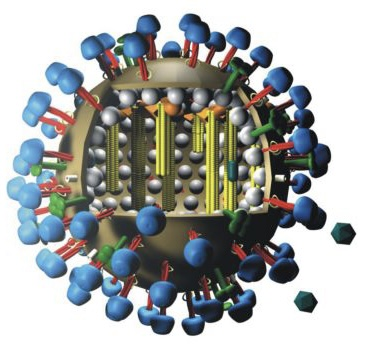Highly pathogenic avian influenza (HPAI) viruses circulate in wild birds and can infect domestic poultry. H5NX 2.3.4.4b is a clade of HPAI responsible for major avian epidemics seen in Europe in the 2016–2017 and 2020–2021 seasons, with the 2021–2022 season being the largest so far in terms of geographic spread and number of detections in non-avian animals [1]. While in recent months poultry infections have declined, HPAI H5NX continues to circulate in wild birds, and HPAI H5N1 genotypes have infected several mammal species in Europe, the Americas, and Asia [2]. Indeed, HPAI H5N1 detected in red foxes in The Netherlands have been found to carry a PB2-E627K mutation that increases viral replication in mammalian cells [3]. Furthermore, HPAI H5N1 was identified to have a neurotropism in these foxes, causing infection in the brain.


